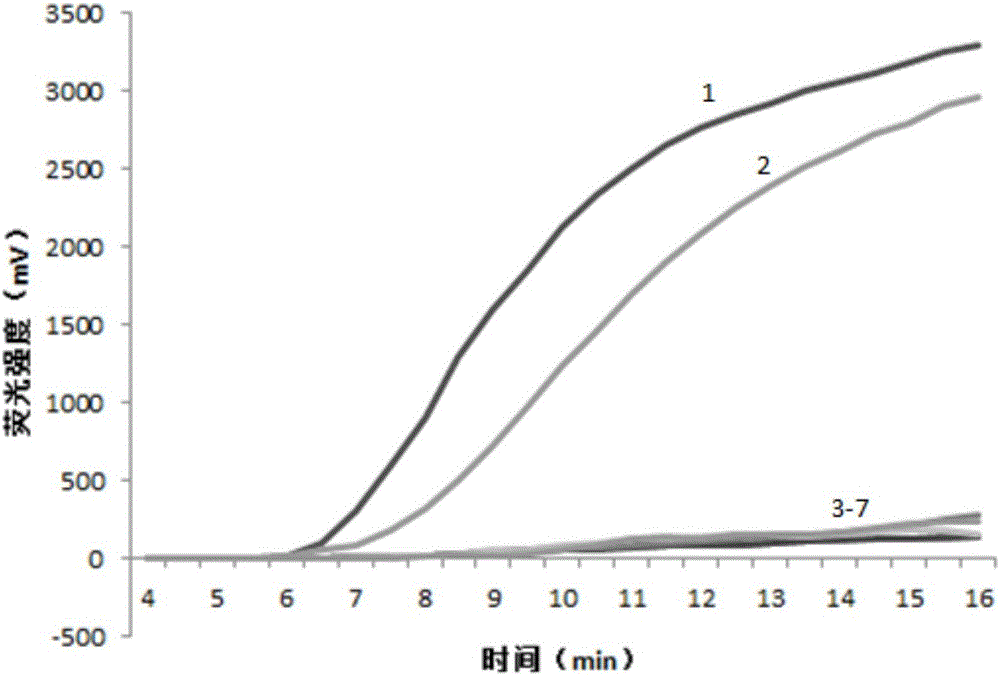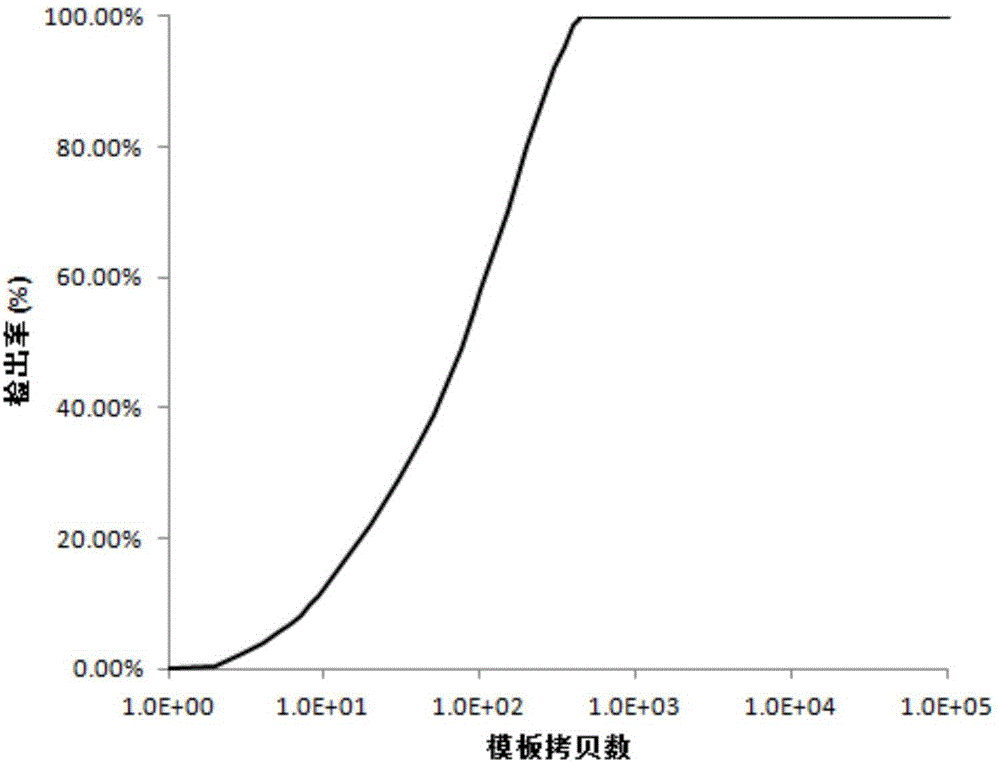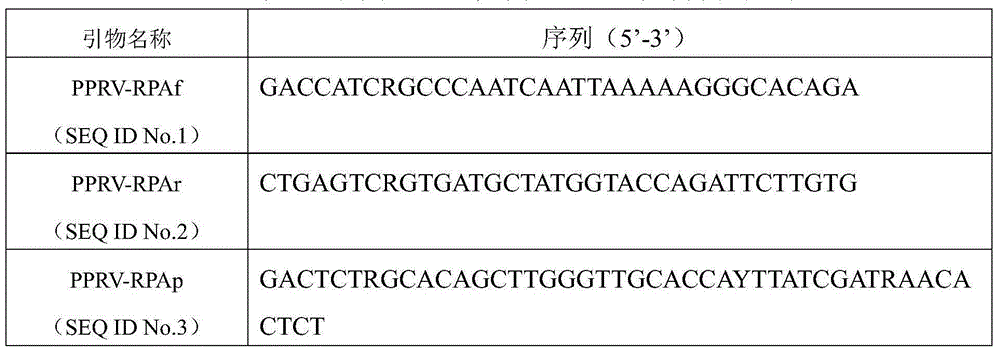Primer and probe for detecting peste des petits ruminants virus by virtue of RPA (Recombinase Polymerase Amplification) technique
A technology of Peste des petits ruminants and reverse primers, applied in the direction of recombinant DNA technology, biochemical equipment and methods, DNA/RNA fragments, etc., can solve problems such as difficult to meet detection needs, tedious test procedures of thermal cyclers, etc.
- Summary
- Abstract
- Description
- Claims
- Application Information
AI Technical Summary
Problems solved by technology
Method used
Image
Examples
Embodiment 1
[0012] Embodiment 1: the establishment of detection method
[0013] Primers and probes were designed according to the genome sequence of Peste des petits ruminants virus in GenBank. The length of the primer is about 30-35nt. Since there is no primer design software for RPA at present, a large number of primers were designed and synthesized in the previous work of the present invention, and a pair of primers with high sensitivity and good specificity were screened out. The primer and probe sequence SEQ ID No: 1, SEQ ID No: 2, and SEQ ID No: 3 (Table 1).
[0014] Table 1: Primers and probes for RPA detection of PPRV
[0015]
[0016] Note: R stands for G or A, Y stands for T or C, the 30th base in PPRV-RPAp marks the BHQ1 quenching group, the 31st base is replaced by tetrahydrofuran, and the 32nd base marks FAM The luminescent group is modified by phosphorylation at the 3' end.
[0017] 1. Materials and methods
[0018] (1) Materials Peste des petits ruminants Tibet strai...
Embodiment 2
[0027] Application of Example 2 in Clinical Samples
[0028] The RPA method established in Example 1 was used to detect the sheep mouth and nose swabs and tissue disease samples of 12 clinical suspected cases in China. Use the High Pure PCR Template Preparation kit from Roche to extract the total nucleic acid templates in the samples to be tested, and then use the RPA method to detect whether these samples contain PPRV. At the same time, 12 samples were tested in parallel according to the common RT-PCR method recommended by the World Organization for Animal Health (OIE). Results The results of the two detection methods were consistent, and all 12 samples were positive for PPRV nucleic acid. The above results show that the results obtained by the primer set, probe and detection method of the present invention are consistent with the results of RT-PCR, which proves the reliability of the present invention.
[0029]
[0030]
PUM
 Login to View More
Login to View More Abstract
Description
Claims
Application Information
 Login to View More
Login to View More - R&D
- Intellectual Property
- Life Sciences
- Materials
- Tech Scout
- Unparalleled Data Quality
- Higher Quality Content
- 60% Fewer Hallucinations
Browse by: Latest US Patents, China's latest patents, Technical Efficacy Thesaurus, Application Domain, Technology Topic, Popular Technical Reports.
© 2025 PatSnap. All rights reserved.Legal|Privacy policy|Modern Slavery Act Transparency Statement|Sitemap|About US| Contact US: help@patsnap.com



